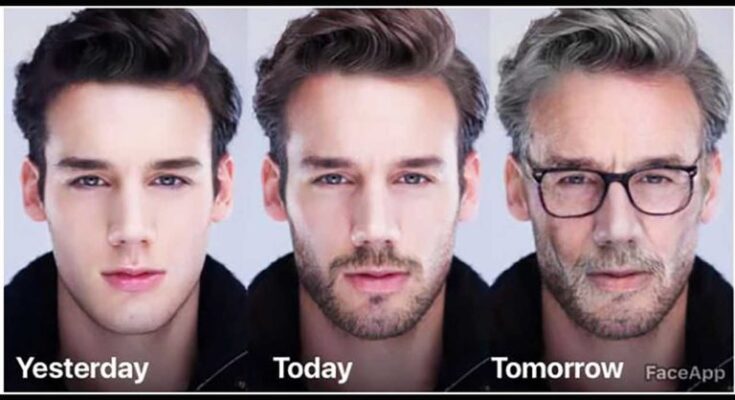In today’s digital age, technology has evolved to the point where we can manipulate and alter images with astounding precision. One of the most fascinating aspects of this evolution is the capability to change faces in images and videos. This technology, known as “face change,” has found applications in various fields, from entertainment and social media to security and research. This article will explore the concept of face change, how it works, its features, the pros and cons, alternatives, and its implications.
What is Face Change?
Face change technology refers to the methods and tools used to alter or swap faces in digital media. This can involve changing the appearance of a person’s face, swapping one face with another, or even creating entirely new facial features using artificial intelligence and machine learning. Face change technology is commonly used in photo editing apps, social media filters, movie special effects, and even in more sophisticated applications like virtual reality and deepfake creation.
How Face Change Works
Face change technology leverages various techniques and algorithms to achieve its results. Here’s a breakdown of the fundamental processes involved:
Image and Facial Recognition
The first step in face change technology is the detection and recognition of facial features. This is accomplished through image processing algorithms that identify key points on a face, such as the eyes, nose, mouth, and overall facial outline. Techniques such as Haar cascades, Histogram of Oriented Gradients (HOG), and Convolutional Neural Networks (CNN) are commonly used for this purpose.
Feature Extraction
Once the face is detected, the next step is to extract detailed features from it. This involves mapping out the facial landmarks which serve as the basis for any modifications. These landmarks include the position of the eyes, the shape of the jawline, the contours of the lips, and more.
Transformation and Manipulation
With the facial landmarks identified, the actual process of face change can begin. This can include:
- Face Swapping: Replacing one face with another. This involves aligning the facial landmarks of both faces and blending them seamlessly.
- Facial Morphing: Gradually transforming one face into another by interpolating the facial features.
- Feature Editing: Changing specific features such as making the eyes larger, altering the shape of the nose, or adding makeup.
- Deepfakes: Using deep learning models, particularly Generative Adversarial Networks (GANs), to create highly realistic face swaps or synthetic videos.
Integration and Rendering
After the transformation is applied, the modified face needs to be integrated back into the original image or video. This requires careful attention to details like lighting, shading, and texture to ensure that the modified face looks natural and blends seamlessly with the surrounding environment.
Features of Face Change
Face change technology encompasses a wide range of features, each tailored to different applications and user needs. Here’s a detailed look at some of the most prominent features:
Real-Time Face Swapping
Real-time face swapping allows users to switch faces instantly in a live video feed. This feature is popular in social media apps and video conferencing tools, enabling users to use face filters and masks during live streams.
High-Resolution Editing
High-resolution editing ensures that the face changes are detailed and realistic, even in high-definition images and videos. This involves advanced image processing techniques that maintain the integrity of the original media’s quality.
Facial Attribute Modification
This feature allows for the alteration of specific facial attributes. Users can change hairstyles, apply virtual makeup, adjust skin tones, and modify facial expressions. This is widely used in beauty apps and digital makeup simulators.
Deepfake Creation
Deepfake technology involves using AI to create highly realistic face swaps. This feature is often used in film production to generate special effects or in creating viral internet content. However, it also raises ethical concerns due to potential misuse.
Emotion Mapping
Emotion mapping allows for the capture and replication of facial expressions and emotions. This feature is essential in animation and virtual reality, where creating lifelike characters is crucial.
Aging and Rejuvenation
Aging and rejuvenation features can make a person look older or younger by modifying facial features. This is used in entertainment to show characters at different ages or in apps that let users visualize themselves in the future.
Background Integration
For seamless editing, background integration ensures that the modified face blends perfectly with the original environment. This involves advanced techniques in lighting and shadow adjustment.
Pros of Face Change
| Pros | Description |
|---|---|
| Entertainment | Enhances the creativity and fun in social media apps, movies, and virtual reality. |
| Accessibility | Available to a broad audience through various apps and platforms. |
| Innovative Applications | Enables new forms of storytelling and content creation in media and entertainment. |
| Educational Use | Useful in educational tools for visual learning and interactive experiences. |
| Customization | Allows for personalized experiences, such as trying different looks or experimenting with makeup and hairstyles. |
| Artistic Expression | Provides a platform for artists and creators to experiment with digital art forms. |
Cons of Face Change
| Cons | Description |
|---|---|
| Privacy Concerns | Risks related to unauthorized use of personal images and potential misuse in creating misleading content. |
| Ethical Issues | Deepfake technology can be used maliciously, leading to misinformation and identity theft. |
| Dependency on Technology | Overreliance on technology for social interactions and personal expression. |
| Accuracy Issues | Potential for inaccuracies and errors in facial recognition and transformation. |
| Cost | High-quality face change software and tools can be expensive. |
| Legal Implications | Unclear legal framework surrounding the use and distribution of altered images and videos. |
Face Change Alternatives
| Alternative | Description | Pros | Cons |
|---|---|---|---|
| Traditional Photo Editing | Manual editing using software like Photoshop. | High control over details, professional quality. | Time-consuming, requires expertise. |
| Makeup and Prosthetics | Physical alteration of appearance using makeup or prosthetics. | Realistic, used in live performances and films. | Can be expensive, not suitable for casual use. |
| Virtual Avatars | Creating digital avatars to represent oneself in virtual environments. | High customization, used in gaming and virtual meetings. | Limited to digital spaces, less realistic compared to face change. |
| Augmented Reality (AR) Filters | Applying digital effects through AR technology in real-time. | Easy to use, available on many platforms, fun and interactive. | Limited to specific applications, not as detailed as face change. |
| 3D Animation and Modeling | Creating and manipulating 3D models for movies, games, and simulations. | High level of creativity, professional applications. | Requires specialized skills, time-intensive. |
Conclusion and Verdict on Face Change
Face change technology has revolutionized the way we interact with digital media, offering a plethora of features that cater to various needs and preferences. Its ability to transform and manipulate facial features with precision opens up new avenues for creativity and innovation in multiple industries. However, the technology also comes with significant ethical and privacy concerns that need to be addressed. As with any powerful tool, responsible use and regulatory measures are essential to mitigate potential risks.
In conclusion, face change technology is a remarkable advancement that, when used appropriately, can enhance entertainment, creativity, and personalization. However, users must remain aware of the potential downsides and strive to use the technology ethically and responsibly.
FAQs Face Change
Q1: What is face change technology?
A: Face change technology refers to methods and tools used to alter or swap faces in digital media, often utilizing AI and machine learning for realistic results.
Q2: How does face change technology work?
A: It involves detecting facial features, extracting key landmarks, transforming the features through various techniques, and integrating the modified face back into the original media seamlessly.
Q3: What are the common uses of face change technology?
A: It is commonly used in social media filters, movie special effects, virtual reality, photo editing apps, and creating deepfakes.
Q4: What are the pros of face change technology?
A: Pros include enhanced creativity in media, accessible tools, new storytelling methods, educational applications, and personalization options.
Q5: What are the cons of face change technology?
A: Cons include privacy concerns, ethical issues, dependency on technology, potential inaccuracies, high costs, and unclear legal implications.
Q6: Are there alternatives to face change technology?
A: Yes, alternatives include traditional photo editing, makeup and prosthetics, virtual avatars, AR filters, and 3D animation and modeling.
Q7: How can face change technology impact privacy?
A: Unauthorized use of personal images and the creation of misleading content can violate privacy and lead to identity theft or other malicious activities.
Q8: What is a deepfake?
A: A deepfake is a highly realistic face swap created using deep learning models, often used in videos to make it appear that someone is saying or doing something they never did.
Q9: Can face change technology be used legally?
A: The legal use depends on the context and consent. Misuse can lead to legal consequences, especially if it involves defamation, identity theft, or privacy violations.




